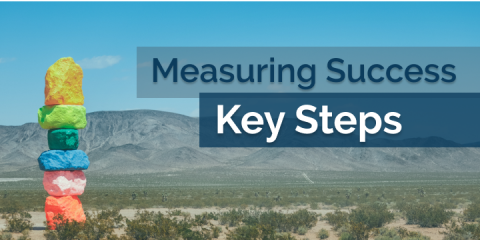Measuring for Success

Sandy Henry, Technology Advocate and former community residential services provider
—
With newly implemented technology support strategies, it is important to measure the success, not only for persons-served and staff, but the financial success as well. To get a full look at the impact technology supports have had on an organization, providers should consider several key factors when assessing the financial output and associated benefits of the plan in place to determine cost effectiveness.
Calculating Costs
Providers should identify and calculate:
- Any changes in revenue or income
- Including rate changes and/or new revenue related to technology use
- All direct cost reductions
- Reduced employee wages, reduced overtime, avoided cost of recruiting and training new employees, if turnover reduced or staff hours reduced, etc.
- Indirect costs or savings
- Management and administration time saved due to reduced turnover and/or reduce staff hours and total number of employees
- Management and administration time saved with access to better, more timely information that informs managers on activities and needs, and/or reduced time spent on investigations
- Provider out of pocket cost
- Cost to rent, purchase, and install equipment, tech vendor support costs, etc.
- Costs associated with maintaining equipment such as batteries or staff time
The calculation of these numbers gives a surface look at cost effectiveness.
It is important to consider the financial impact the addition of technology supports has had on occupancy. Items such as enabling a provider to continue to serve individuals they otherwise would not be able to, the ability to accept someone with needs not previously able to be served by the organization, and new individuals attracted by the technology enhanced services should also be weighed during calculations.
Calculating time saved of management by having the ability to check on information remotely is also an important factor to consider along with the other benefits realized in the areas that follow.
Additional Benefits Realized
Workforce – aside from direct reduction of on-site staff hours
- When individuals served are able to do more things for themselves independently without staff assistance, staff time can be focused on other priority needs and tasks. For example, staff may be alerted if/when someone needs intervention versus continually checking to see if needed. Even if staff continues on-site, when individuals use technology to change the TV channel, take medications, get up on time in the morning, etc., staff may have more time for administrative and documentation tasks, and relationships between staff and individuals usually improve.
- Technology offers the potential to document actual occurrences, verifying when staff have done their job or completed tasks, even if something bad were to occur. This may reduce stress and pressure on staff and managers.
- Managers’ ability to more quickly identify when tasks aren’t being done or to identify when procedures are not followed enables managers to address and correct issues before something bad happens, and to pinpoint training and needed improvement.
Reduction & Investigation of Errors, Omission, Suspected Maltreatment
- Data from some technology can provide early information about delayed or missed cares and activity of staff, allowing managers to intervene sooner – before there is a pattern of errors and/or a negative outcome or harm.
- Technology may be used to provide reminders and prompts to busy staff on scheduled cares, such as medications or repositioning, before a care is actually missed.
- When there is a report of maltreatment, data gathered by technology (e.g., staff movement, individuals served movement/actions, etc.) can help identify whether expected actions by staff were followed or not. This may be used to supplement staff documentation and reporting.
Organizational Growth Opportunity
The ability to add technology that helps staff know where to be and when to be there can enable a provider to serve some individuals they otherwise couldn’t or would have been reluctant to. Behaviors like elopement, going into other’s rooms, and fall risks are easier to support with technology that keeps staff informed of activity without having to be constantly physically present. This assists with occupancy by preventing demission when a person’s needs increase and by increasing the number and types of individuals considered for admission.
The use of technology can open opportunity for new types of services and greater flexibility in a provider’s ability to successfully meet individuals’ needs. Supporting people in their own apartments is a growing area of service that may be added by a provider with little capital investment. Enabling lower need individuals to move into more independent services opens group settings to admit individuals with higher needs.
The use of technology in support plans is not new, but it is changing the landscape of the care industry.
There are many benefits realized by providers through the implementation of technology, and weighing the benefits/costs of these supports into existing offerings has the potential to allow providers to continue providing care in the future as staffing shortages increase.
Learn more about Measurement or to learn the entire process of how to implement technology into care plans, visit the ARRM Technology Resource Center.



